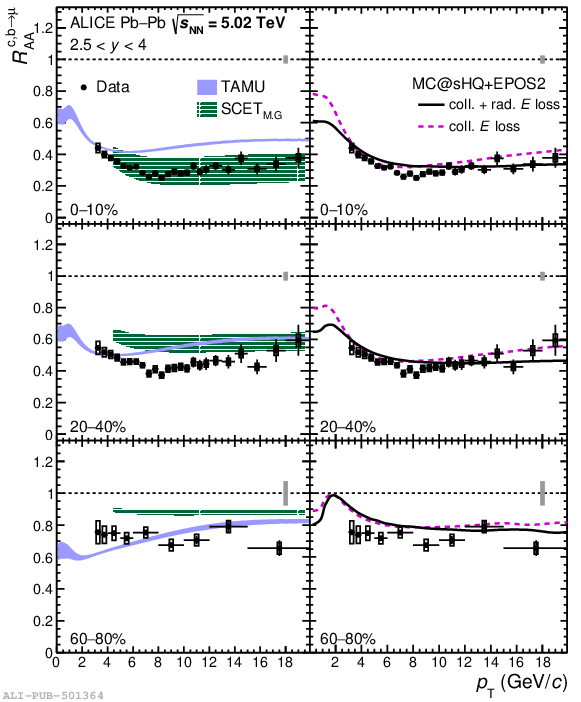Measurements of the production of muons from heavy-flavour hadron decays in Pb$-$Pb collisions at $\sqrt{s_{\rm NN}}$ = $5.02$ and $2.76$ TeV using the ALICE detector at the LHC are reported. The nuclear modification factor $R_{\rm AA}$ at $\sqrt{s_{\rm NN}}$ = 5.02 TeV is measured at forward rapidity ($2.5 <~ y <~4$) as a function of transverse momentum $p_{\rm T}$ in central, semi-central, and peripheral collisions over a wide $p_{\rm T}$ interval, $3 <~ p_{\rm T} <~ 20$ GeV/$c$, in which muons from beauty-hadron decays are expected to take over from charm as the dominant source at high $p_{\rm T}$ ($p_{\rm T} > 7$ GeV/$c$). The $R_{\rm AA}$ shows an increase of the suppression of the yields of muons from heavy-flavour hadron decays with increasing centrality. A suppression by a factor of about three is observed in the $10\%$ most central collisions. The $R_{\rm AA}$ at $\sqrt{s_{\rm NN}}$ = 5.02 is similar to that at 2.76 TeV. The precise $R_{\rm AA}$ measurements have the potential to distinguish between model predictions implementing different mechanisms of parton energy loss in the high-density medium formed in heavy-ion collisions. They place important constraints for the understanding of the heavy-quark interaction with the hot and dense QCD medium.
Phys. Lett. B 820 (2021) 136558
HEP Data
e-Print: arXiv:2011.05718 | PDF | inSPIRE
CERN-EP-2020-186




